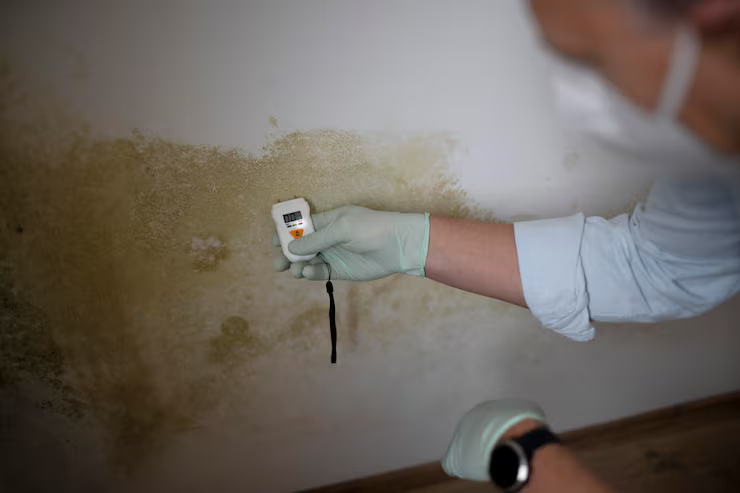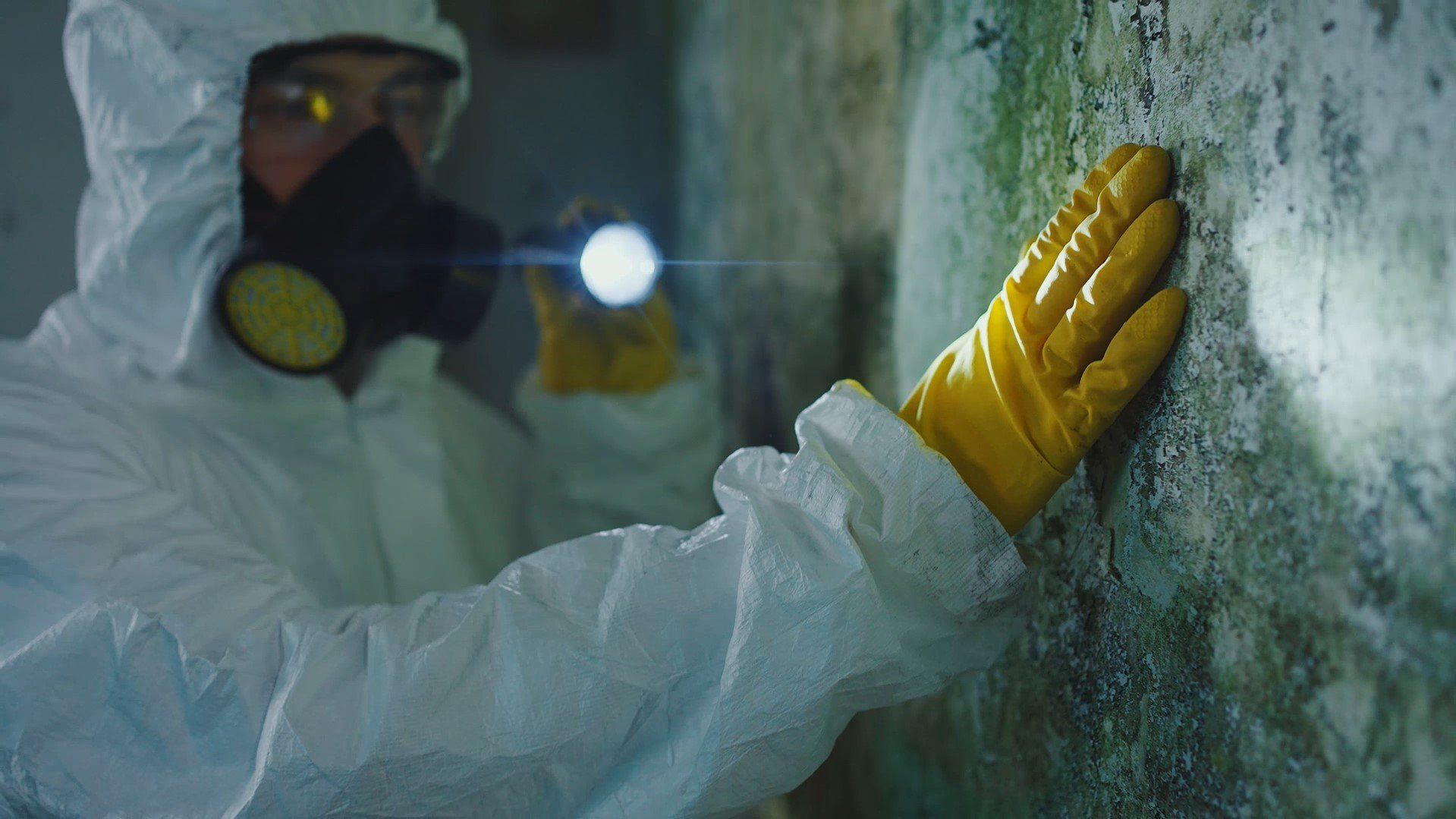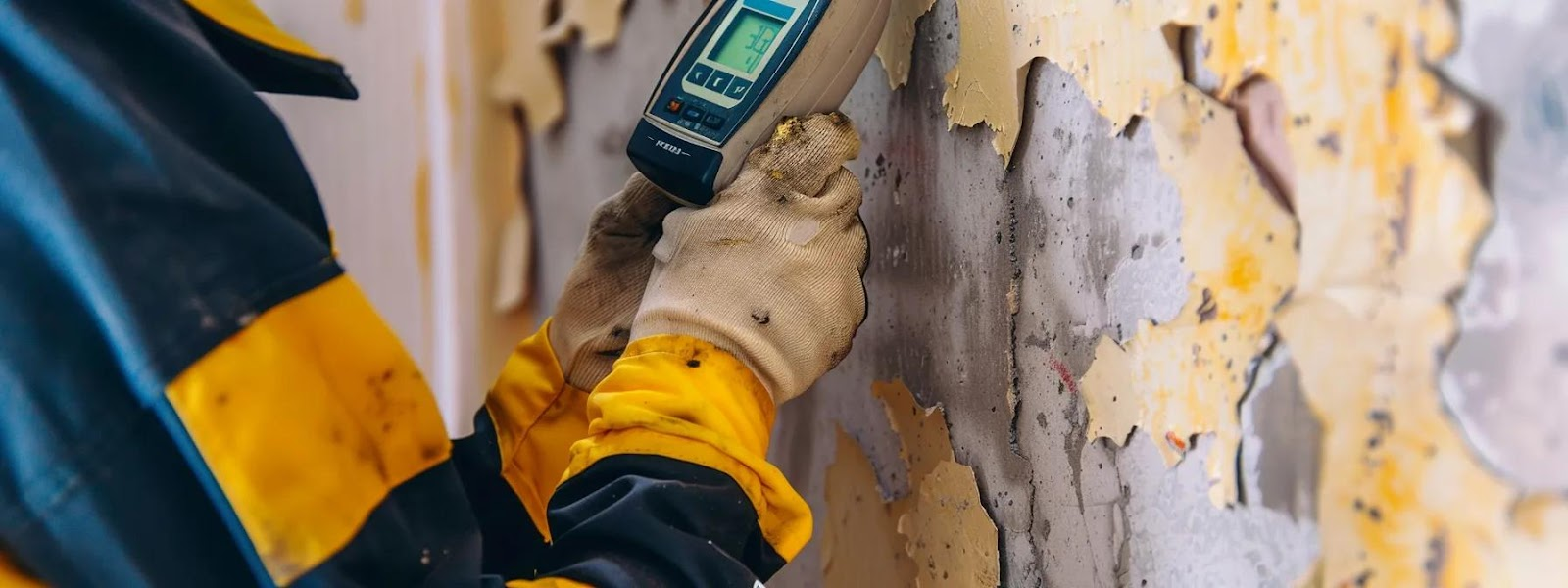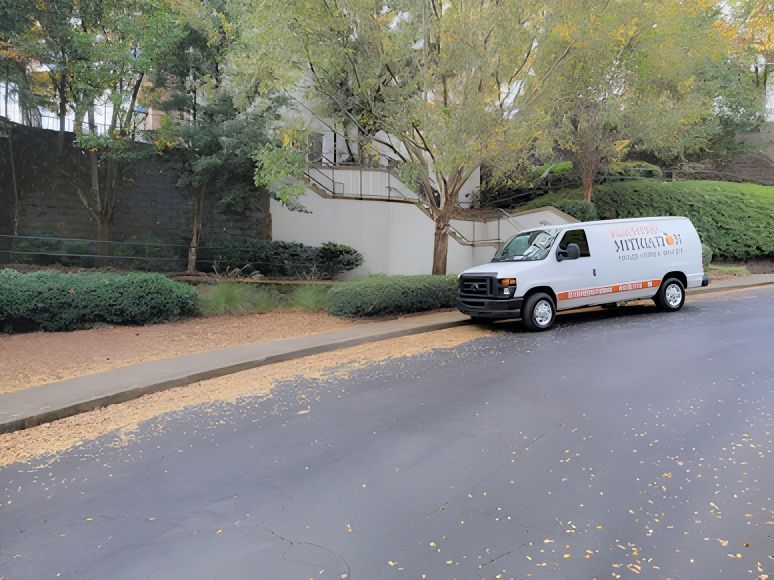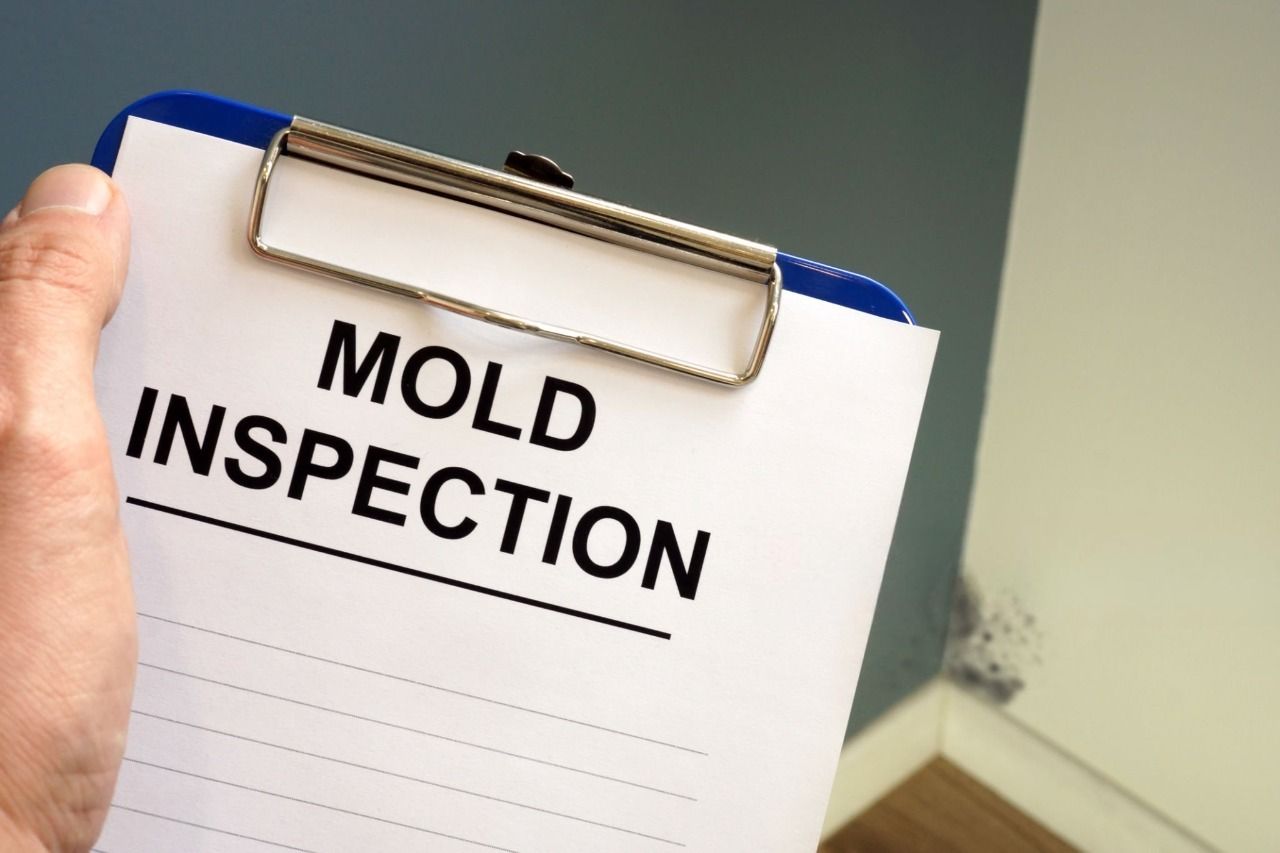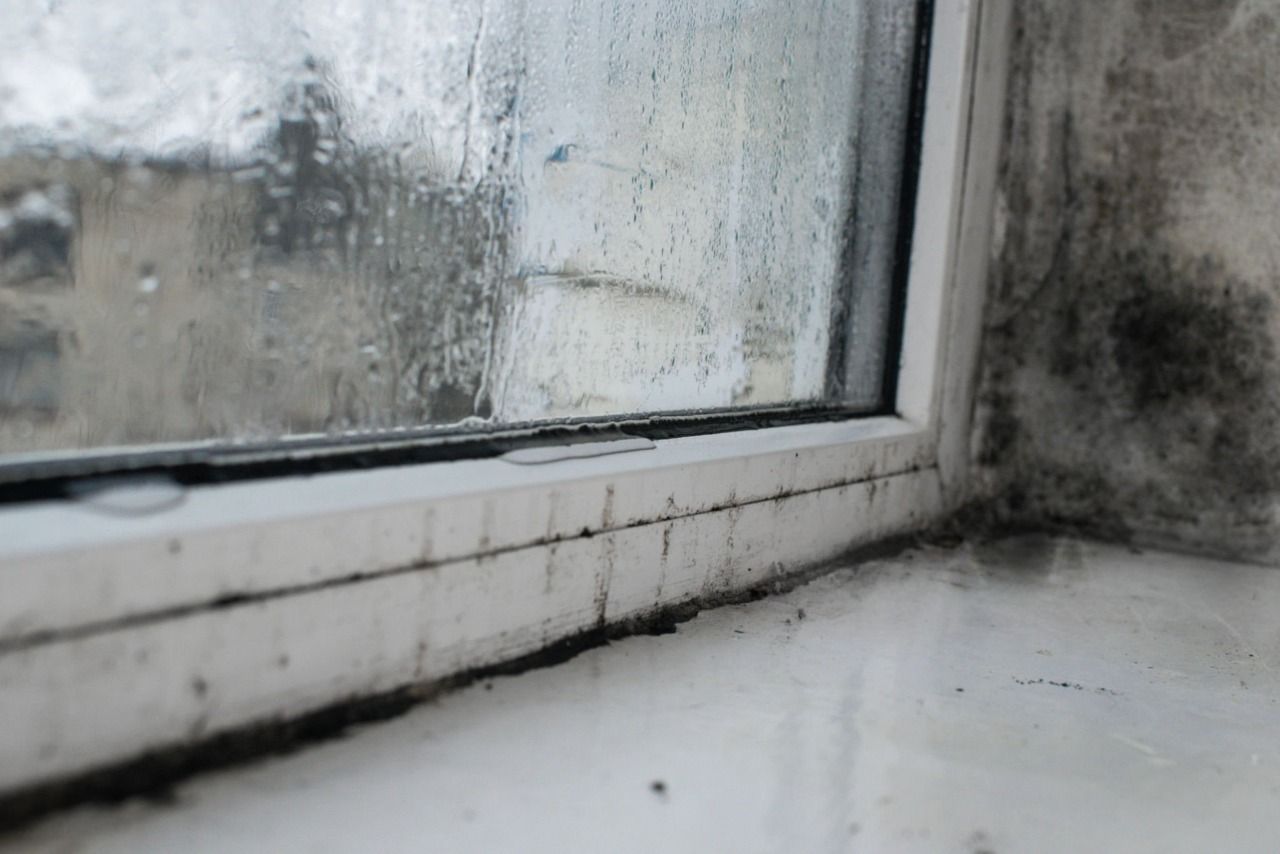8 Warning Signs You Need Mold Testing Right Now
You do not have to see mold for it to be a problem in your home.
This surprises most people. Many think that if they do not see green or black spots, everything is fine. But the truth is, hidden mold could be making you and your family sick without any visible warning signs. The worst part? By the time you see mold, serious damage may have already started.
At Peachtree Mitigation, we understand how stressful it is to worry about the safety of your home. Mold problems feel overwhelming because they grow silently. But there is good news: when you know what to look for, you can catch hidden mold early. This post will teach you how to recognize the earliest signs and explain why professional mold testing is so important.
Musty Smells That Linger
One of the most common early signs of mold is an unpleasant, musty odor. You might notice it in basements, bathrooms, or laundry rooms.
At first, it might smell like dirty socks or damp wood. The smell gets worse when humidity rises. Mold loves moisture, so whenever it rains or when you run the shower, that hidden colony grows stronger.
Think of mold like an invisible wildfire. By the time you smell smoke, the fire is already burning.
If you notice a musty smell that sticks around even after cleaning, it is time to take action. Mold could be hiding in walls, ceilings, under carpets, or inside HVAC systems.
Persistent Allergies or Respiratory Problems
You might blame seasonal pollen or dust for that scratchy throat, watery eyes, or nagging cough. But what if the real problem is growing inside your walls?
Hidden mold releases tiny spores into the air. You cannot see them, but your body can definitely react. If you or your family members experience any of the following, it could be a mold warning:
- Sneezing fits when entering a certain room
- Unexplained headaches
- Coughing or wheezing indoors
- Itchy skin or rashes
- Constant fatigue
Also, symptoms that seem worse when you are at home (but better when you leave) are a big clue. According to the Centers for Disease Control and Prevention (CDC), mold exposure can trigger asthma attacks and cause serious lung infections, especially in vulnerable people.
If symptoms have no clear cause, do not ignore them. Mold testing can quickly determine if indoor air quality is the real problem.
Wallpaper Peeling or Paint Bubbling
Peeling wallpaper, bubbling paint, or warped drywall could mean hidden moisture behind the surface. Moisture is mold’s best friend.
Mold often hides between walls where small leaks go unnoticed. The trapped moisture pushes against wall coverings, causing them to warp, bubble, or peel.
If your walls look "off" or you notice new imperfections, investigate right away. Even small changes could mean mold is growing behind the scenes.
Unexplained Water Stains
Water stains are often brushed off as "old leaks," but they should never be ignored.
Brown or yellow spots on ceilings, walls, or floors tell a story. They mean water was, or still is, present. Where there is water, mold usually follows.
Some homeowners assume a dried-up leak is "no big deal." However, if moisture sat long enough, mold could have already taken hold.
Even if the surface looks dry now, mold can remain active inside porous materials like wood and drywall.
As you know, moisture can seep deep into structures. The longer it stays hidden, the worse the damage becomes.
Warped Floors or Squishy Carpets
Have you ever walked across a floor and felt it sag or bounce strangely? Maybe a carpet feels damp for no reason?
These are warning signs you cannot afford to ignore.
Water trapped under floors is a mold paradise. Carpet padding, subflooring, and wooden joists absorb moisture like a sponge. When this happens, mold can spread in all directions.
A warped floor is like a ripple on a pond. You might only see a small distortion, but underneath, trouble is brewing.
If your floors feel uneven, soft, or damp, call for a professional mold inspection.
Increased Indoor Humidity
Mold thrives in humid conditions. According to the Environmental Protection Agency (EPA), indoor humidity levels above 60% encourage mold growth.
You do not have to guess if your home's humidity is too high. Affordable digital humidity meters are available at hardware stores.
If you find that indoor humidity stays above 55% regularly, you are at a higher risk for hidden mold.
Bathrooms without exhaust fans, kitchens with poor ventilation, and basements with little airflow are prime areas for mold to start.
Controlling moisture is one of the best ways to prevent serious mold issues.
Past Flooding or Plumbing Leaks
If your home has ever flooded, even just a little, hidden mold is a strong possibility.
Water that soaks into floors, walls, and furniture may dry on the surface but stay trapped deep inside materials. Without professional drying, this hidden moisture provides the perfect breeding ground.
The same risk applies to homes with past plumbing issues. Small pipe leaks under sinks or inside walls can lead to mold colonies within days. And even after the water is gone, mold keeps growing unless you take action.
If you have had past water damage, schedule mold testing in Duluth to be safe.
Strange Spots or Discoloration on Surfaces
While mold often hides, sometimes it shows itself.
Dark spots, fuzzy patches, or discoloration on walls, ceilings, tiles, or around windows should not be ignored.
Even "small" mold patches are warning signs of larger hidden colonies. What you see is often just a tiny part of the problem.
Bleaching or painting over mold may hide the stain, but it does not solve the root cause. Proper removal and air testing are needed to fix the issue completely.
If you spot anything unusual growing indoors, treat it seriously.
When to Schedule Professional Mold Testing
Mold testing services by professionals like Peachtree Mitigation are the only way to know for sure if your home has hidden mold.
During a professional mold assessment, we use specialized tools like moisture meters, infrared cameras, and air sampling devices to find mold hiding behind walls, under floors, and inside HVAC systems.
Professional mold testing answers important questions:
- Is there mold you cannot see?
- What type of mold is present?
- How serious is the problem?
Without testing, you are left guessing, which can lead to bigger problems later.
Conclusion
Catching mold early saves you time, money, and stress.
Small mold problems are easier to fix. Large mold problems, on the other hand, often require demolition, expensive remediation, and even temporary relocation.
Mold does not go away on its own. It spreads quietly, damages your home, and affects your health over time.
At Peachtree Mitigation, our team knows how to find hidden mold, assess the damage, and provide clear, honest advice. We are your neighbors here in Duluth, helping families and businesses in Gwinnett County for more than 10 years.
Your home should be a safe, healthy place. We are here to help make sure it stays that way.
Whether you are dealing with suspicious smells, peeling paint, allergy problems, or water damage, now is the right time to act.
Schedule your professional mold assessment with Peachtree Mitigation today!

